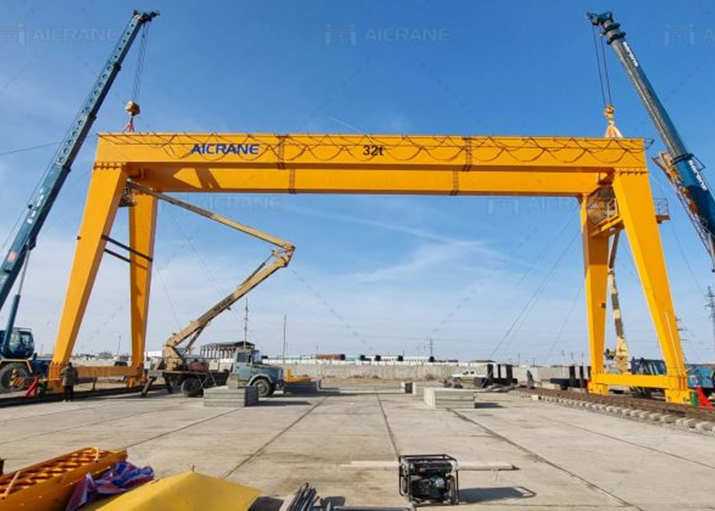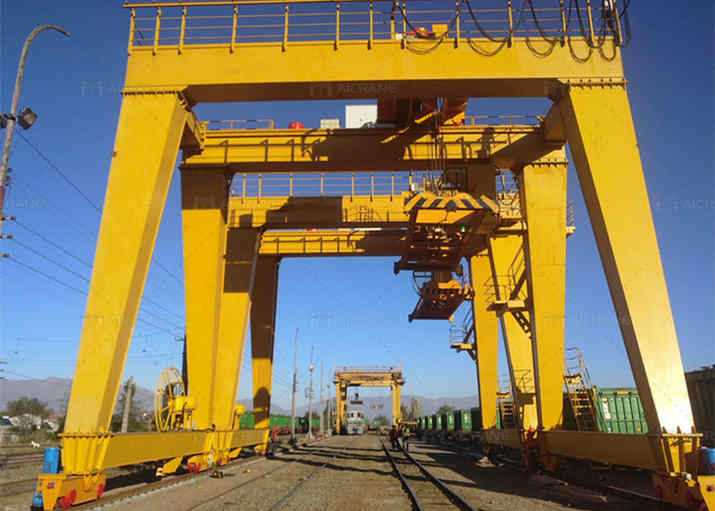Gantry cranes are indispensable machines used in a variety of industries, including construction, port handling, and manufacturing. In Nigeria, gantry cranes are utilized in various sectors due to their versatility and efficiency in handling heavy loads. Whether you're operating a gantry crane in a port, a construction site, or a manufacturing facility, proper understanding of how to use a gantry crane is crucial to ensuring safety and operational efficiency. This guide will explore the essential steps and considerations involved in using a gantry crane Nigeria, with a focus on gantry crane operation, safety, and local factors.
Understanding Gantry Cranes
A gantry crane consists of a hoist, trolley, and a structure with two rails for movement. These cranes are used to lift heavy materials vertically and move them horizontally across the work area. The term "gantry" refers to the crane's framework, which allows it to span over the area where the lifting occurs. There are two primary types of gantry cranes commonly used: single girder and double girder. Double girder gantry cranes are often used for heavier loads and larger spaces, whereas single girder cranes are ideal for lighter tasks and smaller areas.
Common Applications of Gantry Cranes in Nigeria
Gantry cranes are used in a wide range of industries across Nigeria, including:
Port and Harbor Operations: Gantry cranes are essential in ports for container handling, loading, and unloading cargo from ships. The use of gantry cranes in Nigerian ports like Lagos, Port Harcourt, and Onne has significantly improved port efficiency and helped handle the growing volume of cargo.
Construction: Gantry cranes are also widely used in the construction industry, especially for heavy lifting tasks such as moving steel beams, precast concrete components, and construction materials across job sites.
Manufacturing and Workshops: In Nigerian manufacturing plants and workshops, gantry cranes are employed to move large items or materials across workspaces, facilitating faster and more efficient production lines.
How to Use a Gantry Crane in Nigeria
Operating a gantry crane involves a series of steps, from inspection and preparation to actual operation. Understanding each phase ensures that the crane is used effectively and safely. Below are the key steps in gantry crane operation:
Pre-operation Inspection
Before beginning any lifting operation, a thorough inspection of the gantry crane should be conducted. This is crucial to ensure that the crane is in good working condition and safe to use. In Nigeria, where environmental conditions such as heat, dust, and humidity can affect machinery, it is essential to check the crane thoroughly to avoid malfunctions during operation.
Key components to inspect include:
Hoist and Trolley: Check for any signs of wear or damage. The hoist should be tested to ensure it lifts loads smoothly, and the trolley must move freely along the track.
Rails and Wheels: Ensure the crane’s rails are properly aligned and clear of obstacles. The wheels should also be checked for wear and tear to prevent derailment or damage during movement.
Safety Systems: Verify that all safety features, such as emergency stops, limit switches, and overload protection, are functioning correctly.
Power Supply: For electrically powered gantry cranes, check the electrical system for any issues. In Nigeria, power surges and outages can occasionally affect machinery, so a backup power plan is often necessary.
Setting Up the Crane
Once the crane has been inspected and is deemed safe for use, the next step is to prepare the work area and set up the crane.
Clear the Work Area: Ensure the crane's path and lifting area are clear of any obstacles. In construction or manufacturing facilities in Nigeria, this might involve moving machinery or materials that could obstruct the crane’s movement.
Position the Crane: Gantry cranes are often positioned on tracks or rails. In some cases, cranes can be mobile, and careful consideration must be given to the space where the crane will operate. For example, a crane used in a Nigerian port will need to be positioned close to the container loading area.
Load Calculation and Preparation
Before lifting any load, it's crucial to calculate the weight of the object to be lifted. In Nigeria, improper load estimation can lead to dangerous crane operations, particularly when lifting heavy items in busy environments like construction sites or ports.
Load Limits: Each gantry crane has a maximum load capacity, which should not be exceeded. It is important to check the crane's specifications before lifting heavy materials.
Load Positioning: Ensure that the load is properly positioned on the hook or lifting mechanism. For a balanced lift, the load should be centered to avoid swinging or tipping during movement.
Lifting and Moving the Load
When operating the gantry crane in Nigeria, follow these key steps:
Slow and Steady Lifting: Always lift the load slowly and steadily to avoid sudden jerks that could lead to damage or accidents.
Monitor the Load: Continuously monitor the load as it is lifted to ensure it is stable and secure. In Nigeria, where rough handling of cargo is common, this is especially important in port operations where loads may shift or tilt.
Move the Load: Once the load is securely lifted, use the trolley or hoist to move the load horizontally across the work area. In busy areas like Nigerian construction sites, clear communication between the crane operator and ground personnel is essential to avoid accidents.
Safety Considerations
Safety is paramount when operating a gantry crane. In Nigeria, ensuring the safety of both the crane operator and the workers on the ground is critical to preventing accidents.
Training and Certification: All crane operators should undergo proper training and certification. In Nigeria, certain regulatory bodies require operators to have specific certifications to operate cranes in construction or port facilities.
Communication: Establish clear communication between crane operators and ground personnel. This can be achieved through hand signals or two-way radios, especially in noisy environments like ports or construction sites.
Safety Gear: Ensure that all workers involved in crane operations wear appropriate safety gear, including helmets, gloves, and safety shoes. Operators should also wear seat belts and other safety equipment when inside the crane.
Post-operation Procedure
After completing the lifting and moving operations, it’s essential to properly shut down the crane and conduct a post-operation inspection.
Unload and Secure the Load: Safely lower the load to the ground and secure it in its designated position.
Shutdown Process: Turn off the crane’s power supply and ensure that all components are in their resting positions.
Maintenance Check: Perform regular maintenance checks on the crane, as this helps prevent wear and tear. Given the environmental factors in Nigeria, regular maintenance is essential to prolong the life of the crane.
Gantry cranes are vital for industries across Nigeria, particularly in sectors such as construction, manufacturing, and port operations. Proper gantry crane operation is crucial to ensuring safety, efficiency, and the successful completion of construction projects. By following the correct procedures for inspection, setup, load handling, and safety, operators can maximize the crane’s performance while minimizing risks. With the right training and attention to detail, gantry cranes can contribute significantly to the growth and success of various industries in Nigeria.







